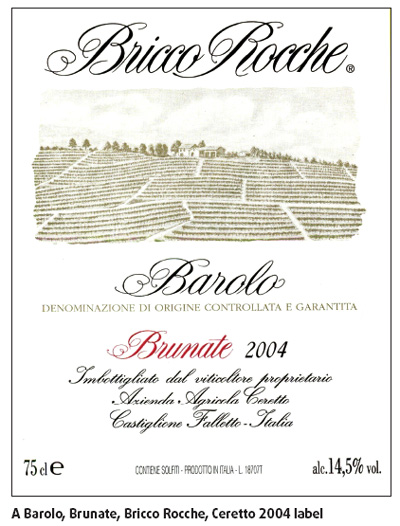Europe's outstanding wines come from France, and Italy too!
Updated: 2009-11-21 08:38
By Maggie Beale(HK Edition)
|
|||||||

In answer to a recent query from a group of ladies in Sai Yin Poon, not all the best wines come from France although the country does have a stellar reputation in that field. Next door in Europe, Italy has some stunning wines that are sold here at a reasonable price.
Just last week I tried wines from one of the best areas in the north of Italy produced for over 70 years by three generations of a wine-making family named Ceretto. The wines are available from Watson's Wine Cellar in Hong Kong.
Little known outside of Italy and a small corner of America's West coast (Mendocino etc), Arneis is the white grape of Italy's Piedmont region, it has more body and more flavor than the better known Pinot Grigio and is sometimes referred to as 'White Nebbiolo'.
In Piedmont, Arneis was traditionally blended with the red wine producing Nebbiolo grape to add perfume and soften the often aggressively tannic structure of this noble grape. However, in a region largely devoid of serious white wine production, Arneis was fortunately saved from complete varietal extinction by the increasing popularity of dry white wines in the 1980s.
For many years Arneis was produced as a slightly sweet wine (half-dry) and several producers in Italy continue this tradition. The grape's name translates as "little rascal", an apt description, as it can be a difficult grape to grow in the vineyard. Grown on the Monsordo Bernardina estate belonging to the Ceretto family, the Ceretto Langhe-Arneis Blange DOC 2008 I tried is a crystal clear, very light, straw yellow, that it is a drier variety with low acidity and is nice and fresh on the nose, with mild aromas and flavors of pears and apricots with a little, very gentle lemon peel note. It is distinguishable by an unusual, slightly bitter floral finish that resembles almond skins on the palate. A good, simple wine both refreshing and attractive. $218 per bottle. Match with fish.
Ceretto Monsordo Langhe Rosso DOC 2007 is a blend of four grapes: Cabernet Sauvignon, Merlot, Syrah (also know as Shiraz), and Italy's native Nebbiolo vine. Because these vines are harvested at different times of the year, making the wine from the "must" (juices) is a staggered process, and the wines are aged in oak barriques for between 16 and 18 months before bottling takes place. This vintage is deep ruby red, with slight garnet (brownish-red) undertones. Rich on the nose, it has notes of spice and vanilla. Very opulent, the structure is immediately recognizable from the first attack in the mouth. Good with a variety of foods including pasta, rice and roast chicken, a variety of cold cuts and veal, it has soft, sweet tannins and good balance. It retails at $258 from Watson's.
This house makes wines from several varietals of grapes including Barolo, Barbaresco and Barolo - Italy's most renowned red wine grape vines. Their top of the range is Ceretto Barolo Bricco Rocche Brunate DOCG, I tried the 2004 - a good year for this predominantly hilly area of magnesium-rich soil. Nebbiolo is a black-skinned Italian variety responsible for some of the best and longest living red wines of Italy. A fickle grape to grow, it is famed as much for its pale (red) appearance as for its tannic characteristics. The Ceretto winery produces some of the most perfumed and richly flavored Nebbiolo wines. Good for those who appreciate medium-bodied wines that allow the taste of the food to show to advantage rather than very strong and aggressive red wines that take over, this particular Barolo has the attractive aroma of red roses with some aromatic notes of anise seeds. The main flavours are ripe black cherries with some understated hints of orange peel and a few green herbal tones. This vintage is good to drink now; it is excellent for a special occasion and will last (unopened) for 17-20 years. Retail $780. Good with red meats, game such as red deer and wild boar and with cheeses.
The best of the wines in Italy qualify for designation as DOC or DOCG quality. To receive either of these, the winery must comply with regulations: where the grapes were grown, which grape varieties were included, how many tons were harvested per acre and a minimum level of alcohol that is in the wine. Only about one fourth of Italian wine is of sufficient quality to be classed as either DOC or DOCG. DOCG: "Denominazione di Origine Controllata e Garantita" is the top classification for Italian wines.
(HK Edition 11/21/2009 page3)